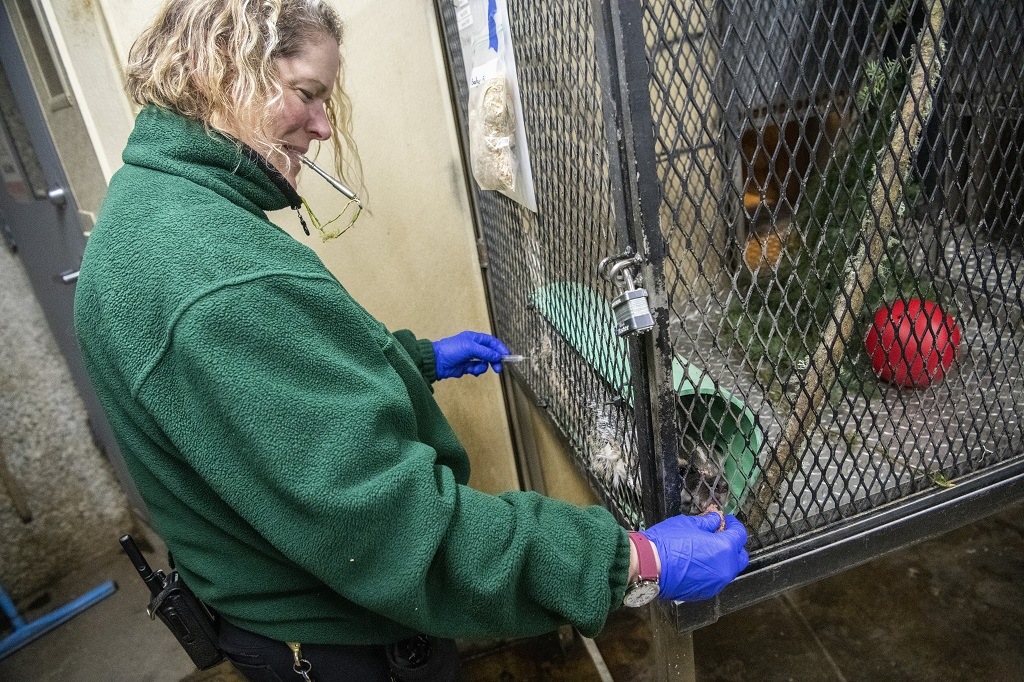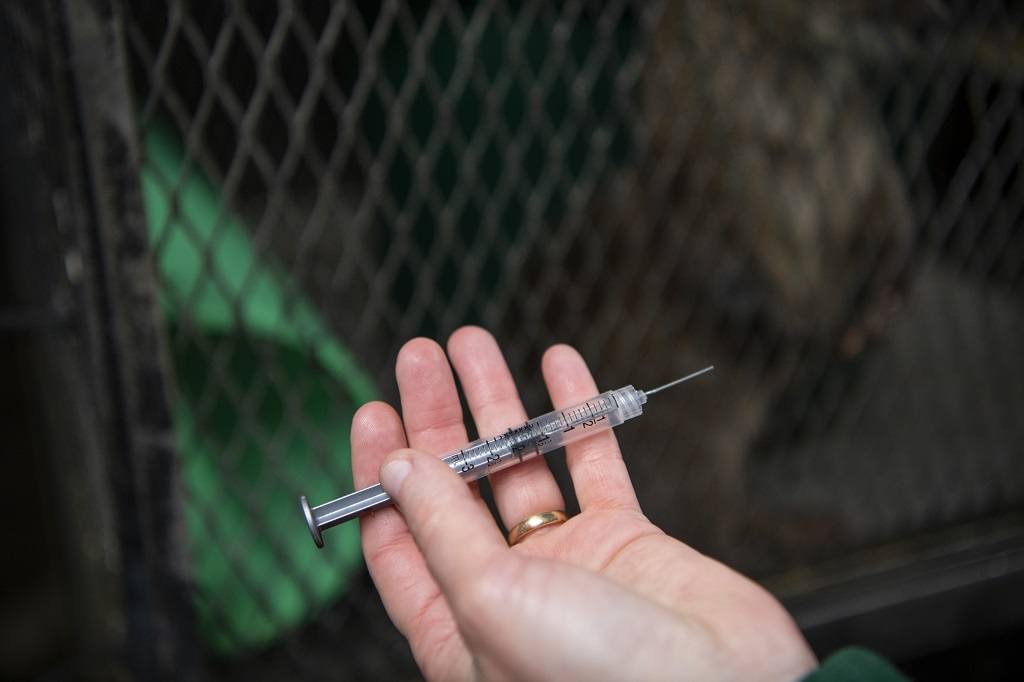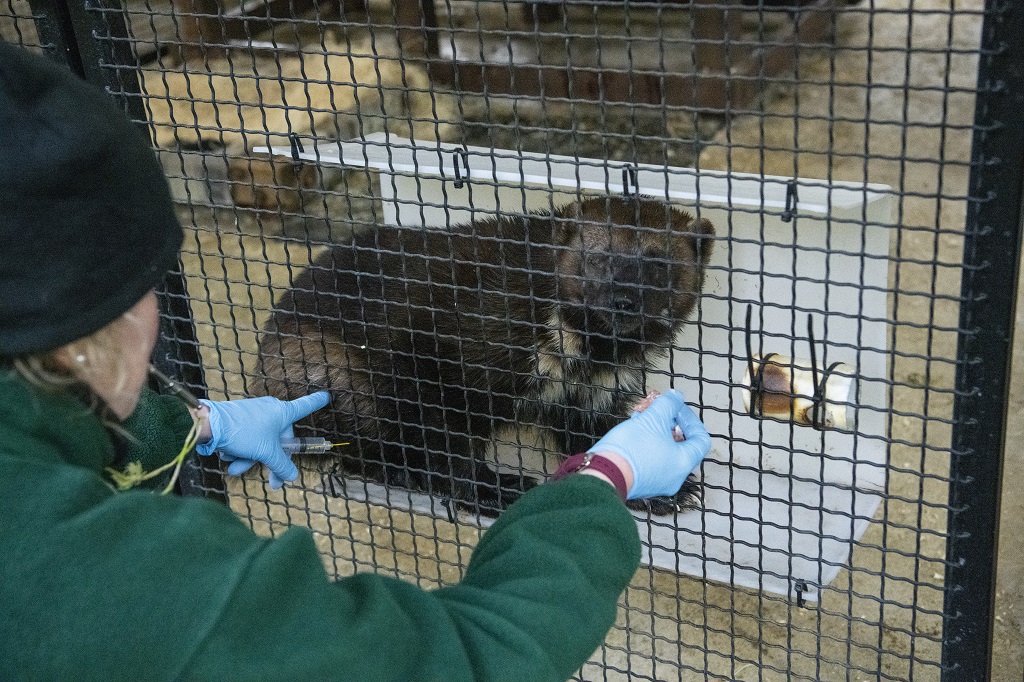How do you vaccinate a wolverine or draw blood from a grizzly bear? It takes dedication, teamwork, patience – and a lot of trust.
Northwest Trek keepers train many of the animals daily to voluntarily participate in their own healthcare — holding still to receive medical injections or X-rays, presenting paws for blood draws, allowing eye drops. The list goes on. And, most importantly, it’s all collaborative.
“If they don’t want to participate, they don’t have to,” explained keeper Wendi, who has cared for animals at the wildlife park for 21 years. “It’s all positive reinforcement training. We must earn the animals’ trust and, in return, they make it easier for us to care for them.”
Not just easier, but safer for the animals too.
“If they willingly allow us to give them vaccines, like distemper, rabies, or flu shots, then we don’t need to restrain or sedate them for preventative care,” said Wendi.
As you can imagine, it’s no easy feat to earn the trust of a cougar, wolverine or badger. After all, they are wild animals.
“If the animals have a good experience with us every day, then we will have those trusting relationships,” said Wendi.

Training for vaccines and other injections starts by having the animal move to an area of their behind-the-scenes bedroom where a keeper can touch them through a barrier. For many animals in the wildlife park’s forest and wetlands area, the first step often means climbing into a tube.

“At first, we just lightly touch them in the hip with our finger. Over time that becomes a toothbrush and then eventually a syringe without a needle for a ‘pretend’ poke,” explained Wendi. “That gradual build up and repetition builds trust between the keeper and the animal.”
The animal is rewarded for each positive behavior with food, like ground meat, frozen mice, or hard-boiled eggs.
“We hope to eventually be able to give the badgers nail trims while they are awake as well,” said Wendi.

This critical training allowed Northwest Trek’s animal care team to recently assess wolverine Ahma’s eyes. They noticed she had a lens luxation – a serious condition that leaves the lens without any moorings and can lead to blindness. While the veterinary team made the challenging decision to remove the elderly wolverine’s eyes, they were able to detect the luxation early before it caused Ahma much pain. Positive reinforcement training also led to Rainier the wolverine voluntarily taking oatmeal bubble baths to treat his seasonally itchy skin. It’s allowed keepers to draw blood from Carly cougar’s tail and from the grizzly bears’ paws to check their overall health. The veterinary team can also closely examine Milton the skunk — listen to his heart, trim his nails and check his feet. And Thistle the porcupine and all the beavers know how to climb on a scale so the team can check their weights and adjust their diets if needed.
“Most animals have short attention,” said Wendi. “But over time they’ve developed these incredible behaviors that allow us to better care for them.”
And while we acknowledge those incredible animal behaviors, we also want to recognize the hard work the keepers and veterinary team have put in to get to this place. Dedication, teamwork, patience and a lot of trust-building.